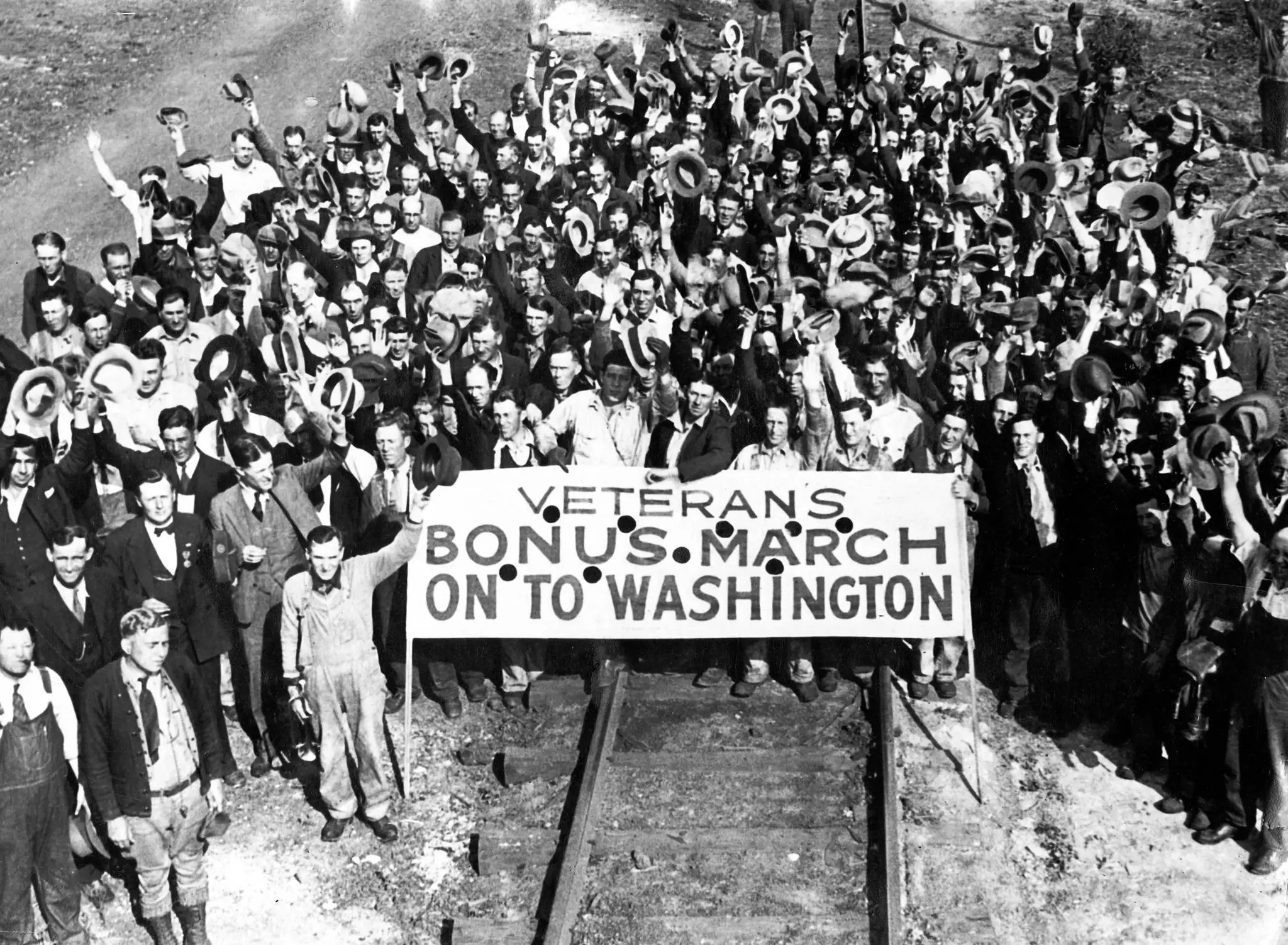Desperate times call for desperate measures. In 1932, the Great Depression was in full swing, and American citizens were increasingly homeless and hungry. Among those destitute masses were tens of thousands of veterans of the trenches of World War I. Their only hope came in the form of a promised “adjusted compensation certificate,” a cash bonus for their dedicated service worth the certificate’s face value with compound interest.
The only problem was that the payment wasn’t supposed to come until 1945. Men with families to feed couldn’t wait. So they gathered together in what the American press called the “Bonus Army” and marched on Washington to demand their payments. Washington responded by clearing the homeless veterans with drawn guns and fixed bayonets.

Life After the Great War
The years following the end of World War I were marked by an economic boom in the United States. It was a period of conspicuous indulgence and consumption we remember today as “the Roaring 20s.” But nothing lasts forever. The stock market crash of 1929 not only devastated the United States but also had a profound impact on much of the rest of the world. Prices skyrocketed, wages fell, and 25% of Americans were suddenly out of work.
World War I veterans weren’t exempt. They struggled like everyone else. However, unlike everyone else, they were promised as much as $1,000 for serving their country during wartime —a special cash bonus for service that would be paid out in 1945. As the months and years of the depression rolled on, however, many decided they would need it much sooner. Walter Waters, a railroad mechanic from Portland, Oregon, rallied his fellow vets to go get it.

The Bonus Army March to Washington
In 1932, the former Sgt. Waters led the “Bonus Expeditionary Force,” a gathering of some 40,000 World War I veterans, to the nation’s capital to demand an immediate payment. Men hitched rides, hopped on railcars, or just walked to join the BEF. As they assembled their “Hooverville” (a Depression-era name for shantytowns built by the homeless) on the banks of Washington’s Anacostia River, the press dubbed them “the Bonus Army.”
The Hooverville was large. It was so large that it had named streets. But the veterans maintained the strict discipline of the trenches. There was no drinking, no begging, and field sanitation was employed at all times. They had parades, schools, a library, a post office, and even a newspaper. Despite this, they were all but ignored by President Herbert Hoover, who had done little for anyone during the Depression, let alone veterans.
Congress did little for them, too. Washington police Superintendent Brig. Gen. Pelham D. Glassford asked Congress to provide $75,000 to feed the veterans, a request they turned down. In June 1932, the House of Representatives voted to pay the bonus to the marchers. The Senate voted against it. President Hoover promised to veto it anyway. After being rejected, some veterans went home, but more soon arrived. The camp would be populated with anywhere between 10,000 and 20,000 veterans and family members by the end of the month. But the end of the month would bring the end of the Bonus Army.

Hoover vs the Bonus Army
On June 28, 1932, Hoover sent in the Army (the War Department believed the Marines, stationed nearby, would side with the veterans). Led by Gen. Douglas MacArthur, 800 U.S. troops moved on the camp with bayonets fixed. They surrounded it with tanks and machine guns as they used tear gas to disperse the vets and burn the Hooverville.
President Hoover blamed the violence on the veterans, saying they were spurred on by communist agitators, an accusation that was immediately refuted. The Bonus Army incident would ultimately contribute to his defeat in the election later that year.
After Franklin D. Roosevelt took office, he, too, opposed the payment of the bonuses. But when the Bonus Army returned during his administration, Roosevelt established a camp for them at Fort Hunt, Virginia, complete with three meals a day and a military band. First Lady Eleanor Roosevelt even visited them.
“Hoover sent the Army,” one veteran would later say. “Roosevelt sent his wife.”
Read About Other Military Stories
If you enjoyed learning about the Tragic Defeat of the Bonus Army, we invite you to read the stories of other remarkable soldiers and their heroic deeds on our blog. In addition to our profiles of celebrities who served, we share military book reviews, veterans’ service reflections, famous military units and more on the TogetherWeServed.com blog. If you are a veteran, find your military buddies, view historic boot camp photos, build a printable military service plaque, and more on TogetherWeServed.com today.

0 Comments